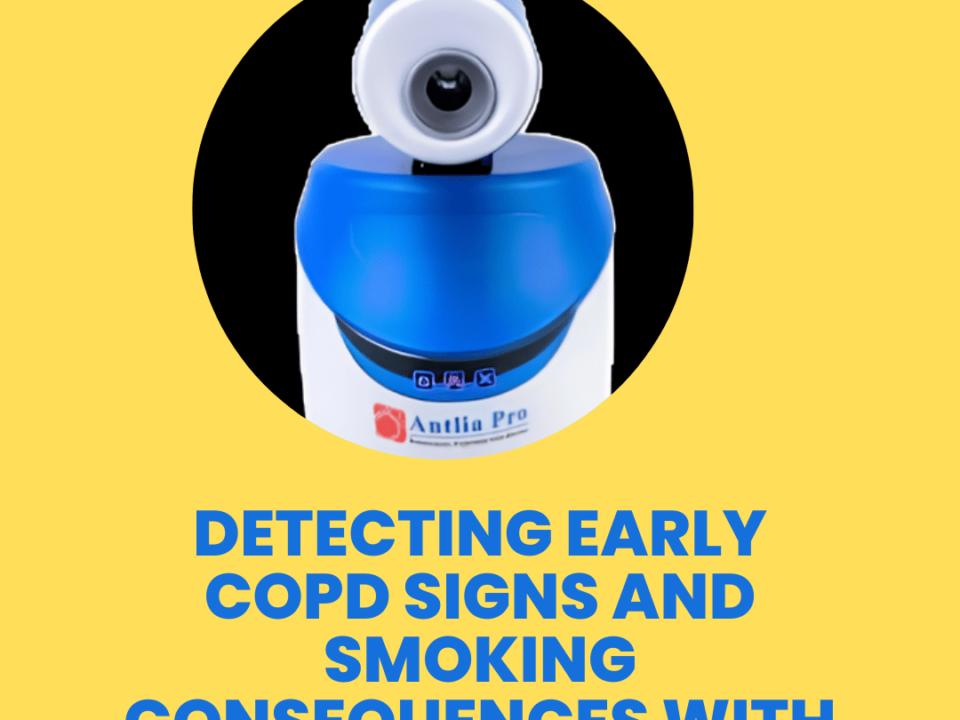
Vaping and its impact on lung function
October 21, 2024
Nutrition and COPD: The Role of Nutrition in COPD Management
November 11, 2024
Despite the clear advantages of quitting smoking, such as reduced disease progression, symptom improvement, and mortality, a significant proportion of COPD patients continue to smoke, and even those who attempt to quit using counseling and pharmacotherapy relapse within a year.
Electronic nicotine delivery systems (ENDS), such as e-cigarettes and heated tobacco products (HTPs), offer an innovative, if controversial, alternative to traditional quitting approaches. These devices eliminate toxic pollutants by preventing combustion. They are still controversial, nevertheless, because of worries about their use by nonsmokers, especially young people, and the lack of information about their long-term health effects.
The effects of switching to ENDS in patients with COPD have been the subject of numerous studies, including one headed by Polosa and associates. According to their findings, people who successfully cut back on or quit smoking experienced significant improvements in their quality of life, ability to exercise, and reduction in exacerbations. Incorporating regular lung function tests can further help track these improvements and provide valuable insights into long-term respiratory health. However, further research is necessary due to limitations like small sample sizes, brief follow-up periods, and concerns about selection bias.
Understanding COPD
The term Chronic Obstructive Pulmonary Disease (COPD) refers to a group of illnesses that cause breathing difficulties by blocking airflow into and out of the lungs. It affects millions of people worldwide and is the fourth leading cause of mortality, resulting in substantial health burdens.
COPD not only makes breathing difficult, but it also causes activity limits, higher hospitalizations, depression, and comorbidities such as diabetes and heart disease. Frequent tracking of the disease's course using a COPD testing device enables prompt medication modifications and better handling of these side effects.
The Dangers of Smoking
Smoking is the primary cause of COPD, responsible for approximately 75% of all cases. Each cigarette & ENDS product releases harmful toxins that damage the lungs' air sacs and airways, leading to inflammation and narrowing of air passages.
This damage results in hyperinflated lungs that trap air, reducing lung capacity and making breathing increasingly difficult.
The Devastating Impact of Smoking on the Lungs
Cigarette smoke contains over 7,000 chemicals, many of which are toxic to the lungs. Each inhalation introduces these chemicals directly into the respiratory system, where they begin to wreak havoc. The smoke causes chronic inflammation in the bronchial tubes, leading to excess mucus production and a persistent cough. At the same time, it weakens the immune system's ability to fend off infections, making smokers more susceptible to respiratory illnesses such as pneumonia.
Moreover, the damage is cumulative. The longer a person smokes, the more severe the lung damage becomes. Eventually, COPD sufferers may find themselves relying on supplemental oxygen or facing the prospect of lung transplantation in severe cases.
Overcoming Challenges in Smoking Cessation
Quitting smoking is challenging, especially for those with COPD, but the stakes are high. Smokers often rationalize their habit, believing they are too old or have smoked too much to quit. However, studies show that even heavy and older smokers benefit significantly from quitting, with improved lung function and reduced mortality risks.
Support and Resources
Effective smoking cessation involves a combination of counseling and pharmacological aids such as nicotine replacement therapies (NRTs), varenicline, and bupropion. An optimal cessation plan includes support programs and medical guidance to manage withdrawal symptoms and maintain motivation.
The Broader Impact of Smoking Cessation
Quitting smoking not only reduces the risk of COPD but also lowers the likelihood of developing severe coexisting conditions like lung cancer, cardiovascular diseases, and diabetes. Moreover, it protects vulnerable populations, such as children, from the harmful effects of secondhand smoke and reduces the global burden of COPD

What positive changes occur after a smoker quits?
20 minutes: The heart rate begins to drop to a healthier level.
8 hours: Oxygen levels in the blood start to recover as carbon monoxide levels decrease.
48 hours: The lungs start to clear mucus, and the sense of taste and smell improves.
72 hours: Airways relax, and energy levels increase.
2–12 weeks: Circulation improves, and the heart becomes stronger.
3–9 months: Lung function improves by up to 10%, reducing coughing and wheezing.
1 year: The risk of heart disease is reduced by half compared to that of a current smoker.
10 years: The risk of lung cancer is halved compared to that of someone who continues smoking.
15 years: The risk of heart attack and stroke becomes the same as that of someone who has never smoked.
These benefits illustrate the profound impact that quitting smoking can have on overall health, even for those with advanced COPD.
Taking the First Step: Quitting Smoking for a Better Future
The journey to quit smoking is undoubtedly challenging, especially for those with COPD, who are often more dependent on nicotine and may feel that quitting is impossible. However, it is essential to remember that the benefits of quitting smoking far outweigh the difficulties. A practical diet for those with COPD is vital.
COPD patients should approach smoking cessation with a solid plan in place. This includes setting a quit date, enlisting the support of family and friends, and seeking professional help, such as counseling, nicotine replacement therapy (NRT), or prescription medications that can reduce cravings and withdrawal symptoms.
It's also crucial to take advantage of the various resources available to support smoking cessation. Organizations like the American Lung Association, the National Heart, Lung, and Blood Institute (NHLBI), and the Centers for Disease Control and Prevention (CDC) offer comprehensive guides, tools, and support networks for smokers looking to quit.
Conclusion: It’s Never Too Late to Quit
COPD is a serious, life-threatening condition, but it’s important to know that quitting smoking can significantly improve the prognosis and quality of life for those diagnosed with the disease. While it may seem daunting to quit smoking, the benefits begin almost immediately, and the long-term rewards are life-changing.
If you or a loved one suffers from COPD, the most powerful step you can take to slow its progression and improve lung health is to quit smoking. Using methods such as the Forced Oscillation Technique (FOT) can also help assess lung function and improve illness management. It’s never too late to make a positive change. Start today, and take control of your future by choosing a smoke-free life.
By quitting smoking, you not only preserve your lung function but also give yourself the best chance at a healthier, brighter future. Don’t wait—take the first step toward quitting today.




